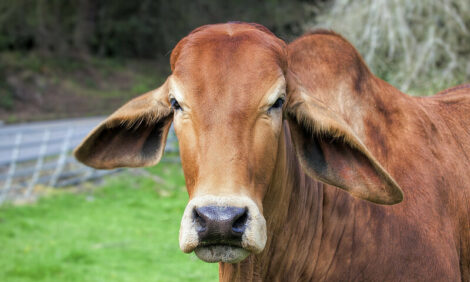



Cattlemen see more ‘Green’ in spring by grazing stockers on wheat
To further capitalise on the average daily gain wheat pasture offers stockers, Dr Reuter recommends cattlemen leverage an implant program as well as incorporate an ionophore.The key to managing an implant program for cattle on wheat pasture — a season lasting from November through April — is having an implant that can actively release for more than 140 days.
“Some implants pay out before that season is over. By using long-acting implants, producers can have a longer payout period. Otherwise, you need to consider re-implanting,” Dr Reuter said. “The most cost-effective management program you can do in stockers is making sure cattle have an active implant. The return on investment is bigger than any other management practice we do in stocker cattle.”
White implemented a head-to-head comparison trial on wheat pasture — 200-day implant Synovex® One Grass versus a competing long-duration implant to see if there was a performance difference. The trial results demonstrated an additional 22 pounds of gain for cattle implanted with Synovex One Grass.*,[1]
“Based on the results, we will certainly be looking to use Synovex One implants when we have a set of cattle we intend to keep out on pasture 140 days or longer,” White said. “Implanting once is much better than trying to bring them back in to re-implant later.”
Dr Reuter's expectations for wheat this year are optimistic, and earlier turnout is likely.
There are clear benefits for grazing cattle on wheat. And with this summer’s rainfall, we can expect to see earlier turnout for cattle on wheat, Dr Reuter said. Mid-November is the normal target date for grazing, but turnout might occur even earlier for many parts of the wheat belt.
“I’ll hedge my bets with predictions for wheat crops this year,” Dr Reuter said. “My expectations are close to normal. We’ve had a good summer in Stillwater, Oklahoma, and are in great shape. At the time of this interview, the northern wheat belt, however, around southern Kansas, western Oklahoma and even parts of southern Oklahoma, still remain in a drought.”
Grazing stocker cattle on wheat pasture over winter presents an excellent opportunity for producers to market calves as feeder cattle in the springtime, with the likelihood of better cattle prices. “An important role of the stocker industry is to spread those calves through the year to have a year-round, consistent supply in the beef chain,” Dr Reuter said.
To extend grazing opportunities with long-duration implant options, learn more at NoStressSYNOVEX.com.
Do not use SYNOVEX products in veal calves. Refer to label for complete directions for use, precautions, and warnings.
* This was a nonblinded, nonreplicated demonstration trial conducted by professional stocker operation White Brothers Cattle Company. It was not designed for or conducted in a manner to determine statistical differences between implant treatments.
About Zoetis
Zoetis (NYSE: ZTS) is the leading animal health company, dedicated to supporting its customers and their businesses. Building on more than 60 years of experience in animal health, Zoetis discovers, develops, manufactures and markets veterinary vaccines and medicines, complemented by diagnostic products, genetic tests, biodevices and a range of services. Zoetis serves veterinarians, livestock producers and people who raise and care for farm and companion animals with sales of its products in more than 100 countries. In 2017, the company generated annual revenue of $5.3 billion with approximately 9,000 employees. For more information, visit zoetisUS.com.
| TheCattleSite News Desk | Read more Zoetis News here |



